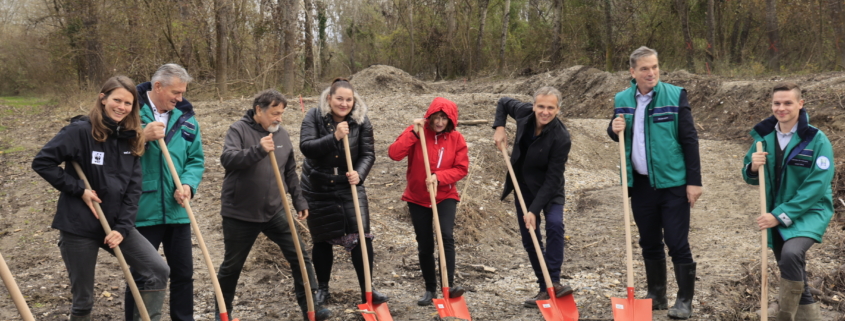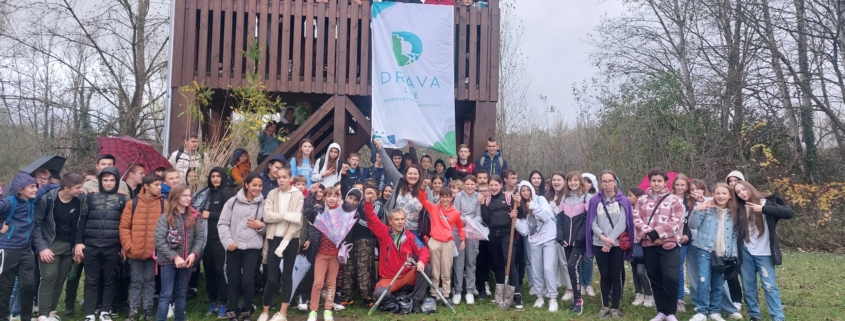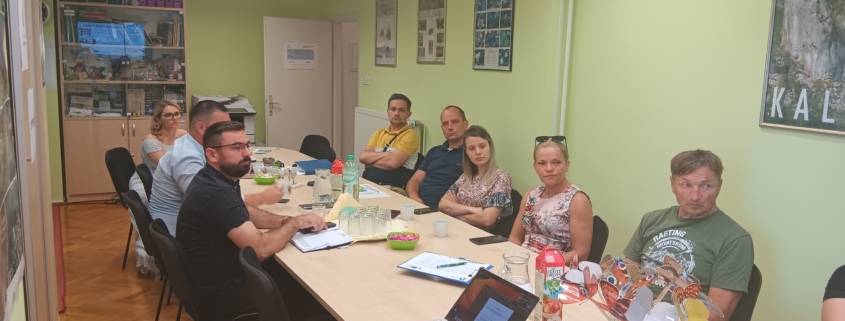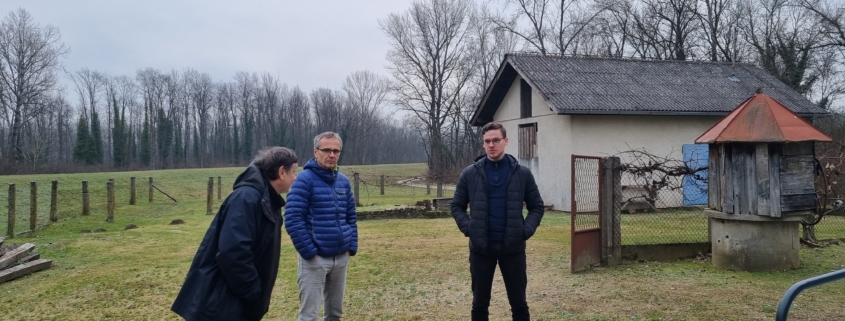Restored branches near Donja Dubrava, Legrad, and Gola were opened
/in Drava, Nekategorizirano, Project /by Iva Naglić DolićDonja Dubrava, March 14, 2024 – Activities for the restoration of Drava River branches within the project “DRAVA LIFE – Integrated River Management” have been completed in the areas of the municipalities Donja Dubrava, Legrad (rkm 238.2-241.4), and Gola (rkm 215-217). With the increase in water levels, the restored branches have become flowing again.
Through the opening and creation of new branches, the removal and adaptation of riverbanks and other water structures, as well as the preservation of floodplains and natural steep riverbanks, key natural features of the Drava River ecosystem, one of the last remaining natural European rivers, are restored. Sediments and barriers were removed from existing branch channel routes, ecological ponds and deep pools were constructed, and gabion barriers and transition ramps were reconstructed at several locations.
“After the restoration works, which began at the end of September 2023, the left bank branch near Donja Dubrava will be 1.56 km long, and the right bank branch will be 1.88 km long,” explained Igor Tošić, the project manager from the Croatian Waters. Both branches, which were overgrown and silted before the restoration works, will relieve pressure on existing water structures downstream, especially during flood events, by opening and diverting new inflow from the main river channel, thus protecting embankments and nearby settlements. This will reduce the need for repairs and construction of regulatory structures along those sections of the Drava, and specifically, with the restoration of the left bank branch in Donja Dubrava, it will increase embankment safety for flood protection.
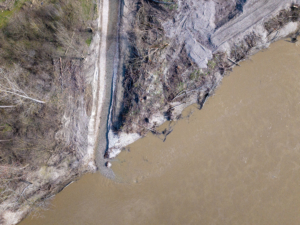
Foto: Goran Šafarek
Additionally, in the left bank inundation from stations rkm 215+000 to 217+000 in the municipality of Gola, near the village of Novačka, works have been completed to open the first 100 meters of an existing non-flowing branch, approximately 1.3 km long.
Drava is known for its highest biological diversity of fish in Croatia and colonies of river birds.
“The habitats on the Drava include some of the most endangered in Europe, such as floodplain forests, wet meadows, gravel bars and sandy shores, branches, steep banks, dead arms, standing branches, abandoned channels, and meanders. Due to various adverse effects, with climate change leading the way, there are changes in hydrological conditions, often causing degradation and disappearance of these habitats, making them increasingly endangered, with their area reduced,” explained Željka Kolar, director of the Public Institution for the Management of Protected Nature Areas in the Koprivnica-Križevci County.
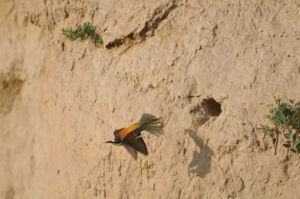
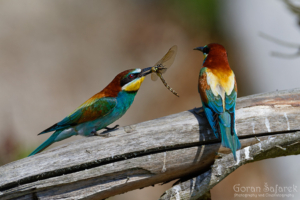
Sand martins and king fishers
In addition to the positive effects on flood defense and Drava’s hydromorphology, branch restoration activities will significantly contribute to increasing biodiversity. New river habitats will intensify along the banks, and new habitats for spawning, feeding, and resting of fish and amphibians will be created within the branches themselves. Drava is known for its highest biological diversity of fish in Croatia. Out of 70 recorded species, five are endemic to the Danube basin: Danube salmon (Hucho hucho), bleak (Rutilus pigus), monkey goby (Gymnocephalus baloni), racer goby (Gymnocephalus schraetser), and streber (Zingel streber)). Out of 70 recorded species, 38 are included in the Red Book of Freshwater Fish of Croatia. Positive effects will also extend to birds nesting on gravel and sandy bars and steep banks, such as the sand martin (Riparia riparia) and the kingfisher (Alcedo atthis).
After the recently opened new branch near Gabajeva Grede and the completion of works in the municipalities of Donja Dubrava, Legrad, and Gola, preparatory work for the branch near the Botovo bridge will continue until the end of March, followed by a break until September to prevent disturbance to river birds, such as sand martins (Riparia riparia), European bee-eaters (Merops apiaster), and kingfishers (Alcedo atthis) during the breeding season.
Intensive educational activities will be carried out during these months. Besides the restoration of the Drava River ecosystem, education on nature protection and Natura 2000 areas in local communities is an important part of the DRAVA LIFE project to increase awareness of the importance of natural and preserved rivers for humans and living beings dependent on them and to prevent human disturbance of birds during the breeding season through recreational activities such as fishing, paddling, and swimming.
In September, restoration works on the Drava will continue at the remaining planned locations in Varaždin and Virovitica-Podravina counties.
Community Gathering in Hlebine
/in Drava, Nekategorizirano /by Iva Naglić Dolić
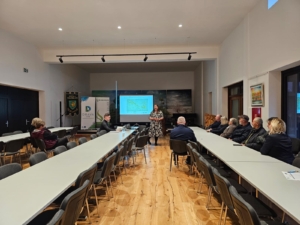
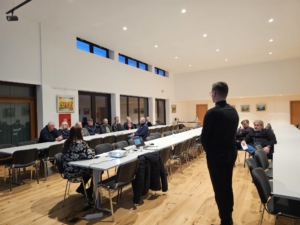
At the Social Center in Hlebine on Thursday, March 7th, a presentation of the project “DRAVA LIFE – Integrated River Management” was held. The local population was presented with the achieved results so far, as well as the announced plans and activities for the upcoming period.
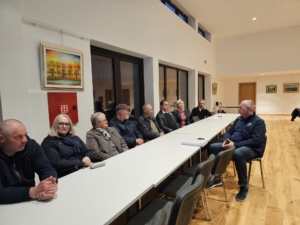
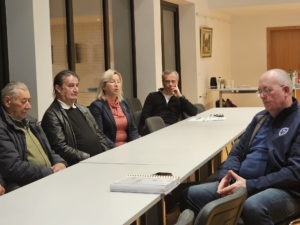
The Mayor of the municipality, Božica Trnski, received the book “Drava Yesterday, Today, Tomorrow” by author Goran Šafarek. The book, made within the framework of the DRAVA LIFE project, summarizes the most relevant data about the river and illustrates them with beautiful pictures. It provides information on the physical characteristics of the river, its social and cultural importance, species and habitats, threats, and the future of this river landscape, taking into account the restoration projects currently underway on the Drava River. We thank everyone who attended!
This year ahead of us is full of activities, both in the field and in the municipalities and places covered by the DRAVA LIFE project. If you wish to receive our news, we invite you to subscribe to the newsletter on the homepage of our website.
An initial channel of the Drava River has been opened
/in Nekategorizirano /by Iva Naglić DolićIn the area of the municipality of Hlebine, near the settlement of Gabajeva Greda, an initial channel of the Drava River has been opened, and other works in Koprivnica-Križevci County, carried out as part of the project “DRAVA LIFE – Integrated River Management,” have been presented to the public.
“We are pleased to show you the newly formed river arm on the right bank of the Drava after intensive work that began earlier this year,” said Ana Šelimber, Deputy Director of the Water Management Department for the Mura and Upper Drava from Hrvatske vode, explaining how the restoration and opening of new river arms like this one will contribute to local water level reduction during major floods and positively impact groundwater reserves.
Ratimir Ljubić, Deputy County Prefect of Koprivnica-Križevci County, recalled the critical flood situation in August last year. He emphasized that besides relieving the watercourse, this river arm will bring additional value to the Drava River while ensuring the preservation of biodiversity of flora and fauna, thus adding extra value. The mayor of the Municipality of Gola, Stjepan Milinković added that the Drava River is the lifeline of this area.
Project leader Igor Tošić (Hrvatske vode) explained, “We are currently at the initial right arm in Gabajeva Greda, which will, after the works, have a total length of 1,196 meters and a channel width of up to 27 meters. After several passes of water waves, this initial arm will assume a more natural, balanced position. Currently, the works on the left bank near the settlement of Novačka are in the final phase, where excavation of approximately 100 meters will open the entrance of the existing arm, which is currently non-flowing, and has a length of around 1,200 meters. In addition to these locations, works are currently underway in the municipalities of Donja Dubrava, Legrad, and Ferdinandovac in Koprivnica-Križevci County for the restoration of Drava river arms. Upon completion of the works, all river arms will be flowing for most of the hydrological year.”
In addition to restoring the Drava River ecosystem, the project promotes nature conservation in local communities and increases awareness of the importance of its preservation.
“In collaboration with public nature protection institutions from Koprivnica-Križevci, Varaždin, and Virovitica-Podravina counties, by organizing various events, exhibitions, setting up educational infrastructure such as educational centers and trails with informational boards along the Drava River, we aim to connect the local population with the project and enhance awareness of the importance of natural and preserved rivers for humans and the living beings that depend on them, and to improve their knowledge of the Natura 2000 network, especially regarding protected river birds,” emphasized Jasmin Sadiković, project coordinator from the Association for Nature and Environment Protection Green Osijek.
The area of the DRAVA LIFE project is part of the first World Five-Country UNESCO Biosphere Reserve Mura-Drava-Danube, known as the “European Amazon”, which is located in Austria, Slovenia, Croatia, Hungary, and Serbia.
“I am happy that today we can witness the creation of a completely new arm of the Drava River and that intensive work is being done at other locations,” said Arno Mohl from WWF Austria. “Efforts to restore Novačka are the best example of integrated river management in cooperation between the water management and nature protection sectors. Instead of reinforcing embankments, more space for river flow is provided, which will help not only in flood protection but also increase river dynamics and enable the development of new sandy and gravel islands, which are the most important river habitats for endangered birds like the little tern or almost extinct plant German Tamarisk.
“River restoration projects as DRAVA LIFE are an important steps in implementing the Nature Restoration Law adopted by the European Parliament earlier this week, which requires member states like Croatia to restore all degraded ecosystems. Its implementation will reverse the damage inflicted on ecosystems in Europe. Untouched rivers, forests, and other ecosystems are our most important allies in combating the climate and biodiversity crises. Restoration within the Drava LIFE project is the first of its kind in Croatia, in collaboration between the water management and nature protection sectors, which has proven successful, so we expect even more ambitious initiatives in the future,” concluded Mohl.
Action to Reintroduce German Tamarisk to the Natural Habitats of the Drava River
/in Nekategorizirano /by Iva Naglić DolićAt several locations along the Drava River in Varaždin County, organized by the Public Institution Nature of Varaždin County, a dozen river enthusiasts carried out another action to reintroduce German tamarisk back into its former habitats.. This involves an attempt to repopulate river plants, specifically a renewed effort to introduce the strictly protected and critically endangered German tamarisk to the natural habitats of the Drava River.
This is a continuation of last year’s activities involving the translocation, or transplanting, of plants of this species from the gravel pit in Sračinec to the Drava river banks downstream of the Ormoško Lake. The uniqueness of this year’s action lies in the use of 30 young seedlings grown in the nursery of the Arboretum Opeka High School in Marčan, from cuttings of German tamarisk parent plants taken from the Turnišće gravel pit in Sračinec. According to available data, this location is one of only two in Croatia where German tamarisk still appears. Partners from the DRAVA LIFE project, supported by the botanist Dr. Dragica Purger, also participated in this year’s action.
German tamarisk (Myricaria germanica)
German tamarisk (Myricaria germanica) is a shrubby plant that was once common on the Drava river banks and gravel bars but is now almost completely extinct and considered a critically endangered species with a high risk of extinction. It is a plant adapted to the unique ecological conditions of habitats limited to newly formed gravel bars. Therefore, this species is one of the indicator species of healthy and natural rivers. Due to anthropogenic influences and changes in the morphodynamics of the river, German tamarisk has disappeared from its natural habitat in the Drava River in Croatia. It can only be found in secondary, anthropogenic habitats such as gravel pits and canals.
Previous attempts to plant or reintroduce German tamarisk to the natural habitats of the Drava River were made in 2018 and 2019 as part of the DRAVA LIFE project. In 2022, due to the expansion of gravel exploitation works, about thirty individuals of this species were removed from the Turnišće gravel pit in Sračinec and relocated to the natural habitats along the Drava River downstream of the Ormoško Lake. During this activity, cuttings were taken from the parent plants for cultivation and propagation of this plant in controlled conditions to obtain seedlings for future planting or reintroduction of German tamarisk to the Drava River. As it is a strictly protected species of the Republic of Croatia, all activities obtained permission from the Ministry of Economy and Sustainable Development.
Although previous attempts to reintroduce German tamarisk to the natural habitats of the Drava River have not been successful, primarily due to factors related to changed habitat conditions and extreme weather events, we hope that this year’s planting has identified suitable micro-locations where Greman tamarisk will successfully grow.
This action, attempting to bring back disappearing native wild species into nature, also contributes to the restoration of degraded ecosystems. This aligns with the requirements of the recently agreed-upon nature Restoration Law which is expected to be adopted soon by the Council of the European Union and the European Parliament.
Will we succeed in bringing German tamarisk back to the natural habitats of the Drava River? We do not know. But we must try, because if we do not try, we will never find out.
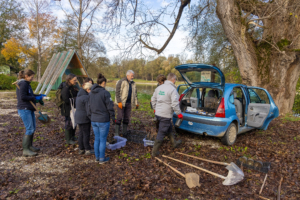
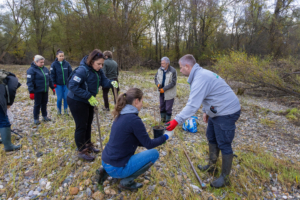
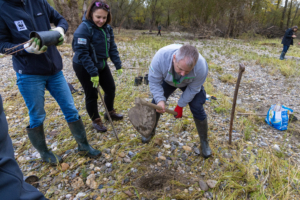
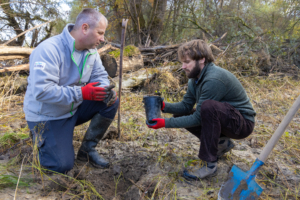
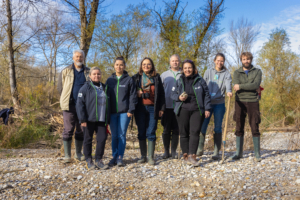
Work has commenced on the first of six renovation locations as part of the DRAVA LIFE project
/in Nekategorizirano /by Iva Naglić DolićOn the 17th of November, at the branch of the Drava River near Legrad, a public presentation marked the commencement of work on the first of six planned restoration sites under the DRAVA LIFE – Integrated River Management project. ’ After many years of preparation, the start of restoration at this location is a significant milestone in the implementation of the Project,’ said Mr. Milan Rezo, the director of the Water Management Department for Mura and Gornja Drava in Hrvatske vode.
The opening of a side arm to the Drava, with a total length of 1560 m and connected smaller arms, oxbows, and waters, is planned. This will be achieved through the deepening and removal of natural sediment deposits at the entrance of the side arm, which currently obstruct the water flow from the Drava into the system for most of the year. Additionally, there are plans to remove a 20 m-long traverse that crosses the sidearm. The excavated material will be stored a bit further downstream on the left riverbank, allowing it to be naturally eroded and washed away by the river.
“With the implementation of the DRAVA LIFE project, we are introducing new practices in water management and nature protection based on numerous experiences across Europe”, Milan Rezo, the director of the Water Management Department for Mura and Gornja Drava in Hrvatske vode, said. “These experiences have shown that the restoration of rivers and their floodplains is one of the most environmentally friendly ways to improve the state of the ecosystem and defend against floods. After many years of preparation, the start of work at this location is a significant milestone in the implementation of the Project.’
Speakers at the event included Igor Horvat, Vice-President of the Municipal Council of Legrad Municipality; Ratimir Ljubić, Deputy Prefect of Koprivnica-Križeva County; Milan Rezo, Director of the Water Management Department for Mura and Upper Drava (Hrvatske vode); Jasmin Sadiković from Zeleni Osijek; Željka Kolar, Director of the Public Institution for the Management of Protected Nature Areas in Koprivnica-Križevci County; and Tanja Nikowitz from WWF Austria.
With the restoration of the Drava River, the area will gain attractive landscapes and biological sites, serving as a new resource for the development of ecological tourism and educational activities. Jasmin Sadiković, the project coordinator from the association Zeleni Osijek, highlighted the importance of learning about applied restoration measures, river habitats, and endangered species. He emphasized that this knowledge will enhance the understanding of the need for protection and coexistence of local communities with the ecosystem of the river Drava, while presenting the project’s achievements so far and plans for the next period.
According to Željka Kolar, the director of the JU for the Management of Protected Areas of Nature in Koprivnica-Križevačka County, “Renovation activities will be of great importance for the preservation of target species and habitat types in the Natura 2000 areas covered by the project.”
Tanja Nikowitz from WWF Austria emphasized the broader context, stating, “The recently agreed Regulation on the Restoration of Nature, which should soon be adopted by the EU Council and Parliament, urges member states like Croatia to restore degraded ecosystems. River restoration projects like the DRAVA LIFE project are an important step in the implementation of this new Regulation and the joining of forces against climate change and the loss of biodiversity.” She added, “The area of the DRAVA LIFE project is included in the world’s first Five-country UNESCO Biosphere Reserve Mura-Drava-Danube, known as the ‘Amazon of Europe.’ This extraordinary initiative embodies the joint commitment of Austria, Slovenia, Croatia, Hungary, and Serbia, demonstrating that conservation knows no borders.”
Igor Tošić, the project manager from Hrvatske vode, presented the upcoming plans and led participants to the side-branch, where the work was ceremonially started by burying shovels.
A sincere gratitude to everyone who joined us, making this day truly special! Your presence and support mean the world to us.
About a hundred students and their teachers participated in the activities of the “DRAVA LIFE” project in the area where the Mura meets the Drava
/in Nekategorizirano /by Iva Naglić DolićOn October 27, 2023, representatives from the association Zeleni Osijek, alongside members of the Public Institution for Management of Protected Natural Areas in Koprivnica-Križevci County, conducted educational activities as part of the DRAVA LIFE project. The event took place at the confluence of the Mura and Drava rivers in Legrad.
These activities were carried out in collaboration with students from Andrija Palmović Primary School in Rasinja. Approximately a hundred students and 15 teachers actively participated in the educational programs, which featured specially designed worksheets created within the framework of DRAVA LIFE for Schools in Nature, Excursions, and Action Days. On the same day, an action-focused event centered on the removal of invasive species was held. Alongside a presentation on invasive species, students and professors had the opportunity to engage in hands-on removal of Amorpha fruticosa along the educational trail in Legrad.
Educational workshop about the protection of the little tern
/in Nekategorizirano /by Iva Naglić DolićAn educational workshop took place in Koprivnica on July 19, 2023, focusing on raising awareness about the sensitivity of terns, little terns, and other gravel bar breeders during the crucial period of the breeding season. The workshop was hosted by the courtesy of the Public institution for the management of protected natural values in Koprivnica-Križevci County and aimed to educate regular visitors of the Drava River, including organizations leading rafting tours and anglers, about the significance of preserving the habitats of these endangered and threatened species.
The workshop emphasized the need to avoid using gravel bars from April to July, a period identified as the most sensitive for these bird species. Attendees were educated on responsible practices to minimize disturbance during the critical breeding season and reminded of the importance of staying in groups, and not walking around on the gravel bar if visiting it at all since their nests and eggs are very similar to gravel and almost impossible to notice.
To give the broader context to nature conservation of the area, Mrs. Željka Kolar, Director of the mentioned Public Institution, also presented on the significance of protecting the Drava River as well as providing an overview of protected areas and protected species that can be found within the County.
This collaborative initiative aligns with the goals of the Drava LIFE project while emphasizing the importance of respecting nature. The whole approach goes very well with a strategic approach towards sustainable management of the five-country UNESCO Biosphere Reserve Mura-Drava-Danube.
These educational workshops serve as vital tools in fostering a shared responsibility for protecting the Drava River’s unique ecosystems and ensuring its diverse wildlife’s continued well-being.
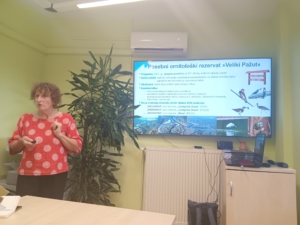
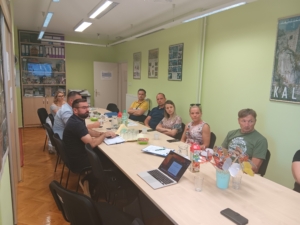
DRAVA LIFE project partners meet for the 39th time!
/in Nekategorizirano /by Petra Boic PetracOn 13th and 14th of December 2022 DRAVA LIFE partners met for the 39th time in Hrvatske vode department in Varaždin in a hybrid form. Project partners used the meeting to update each other on the current activities and discuss details of the upcoming restoration activities. Most progress has been made towards the implementation of the concrete restoration activities which should start during winter period of 2023!
On the second day, several project partners visited restoration locations C.3 Donja Dubrava – Legrad and C.4 Botovo Bridge to discuss details of the restoration activities in more detail and assess the impact of building of the new railway bridge across Drava River at Botovo on the dynamic of implementation of the sidearm restoration.
This was the last project partner meeting for 2022. Project partners wish you a cheerful happy holidays and healthy and happy New Year!
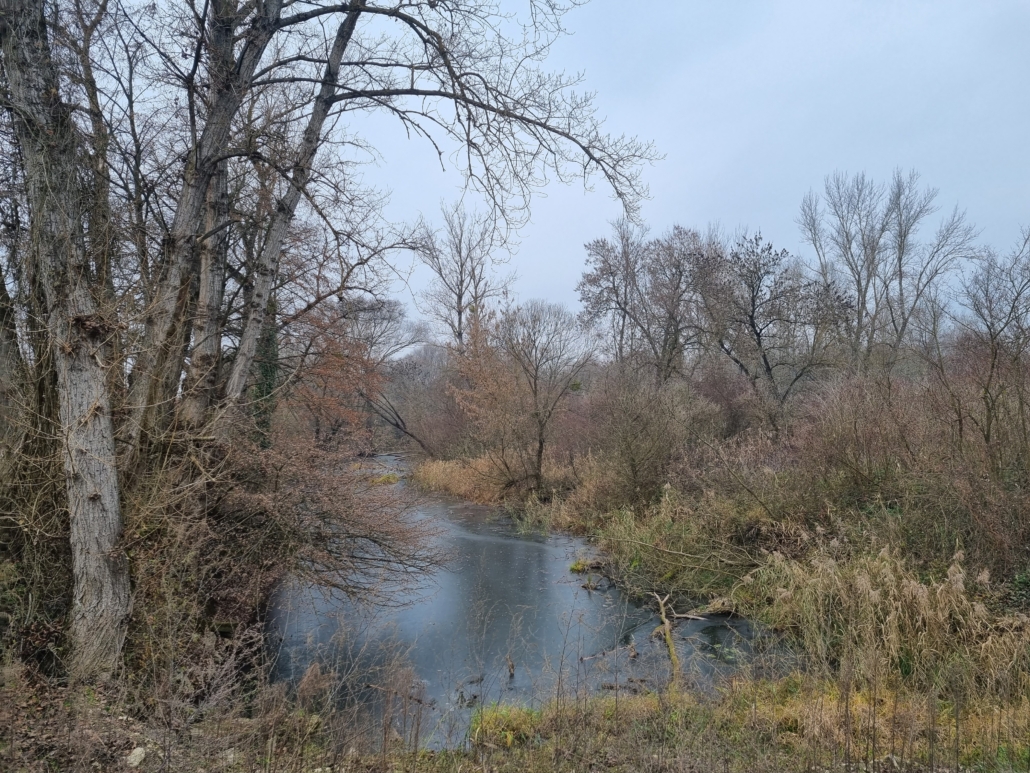
C.4 restoration site©B. Španiček
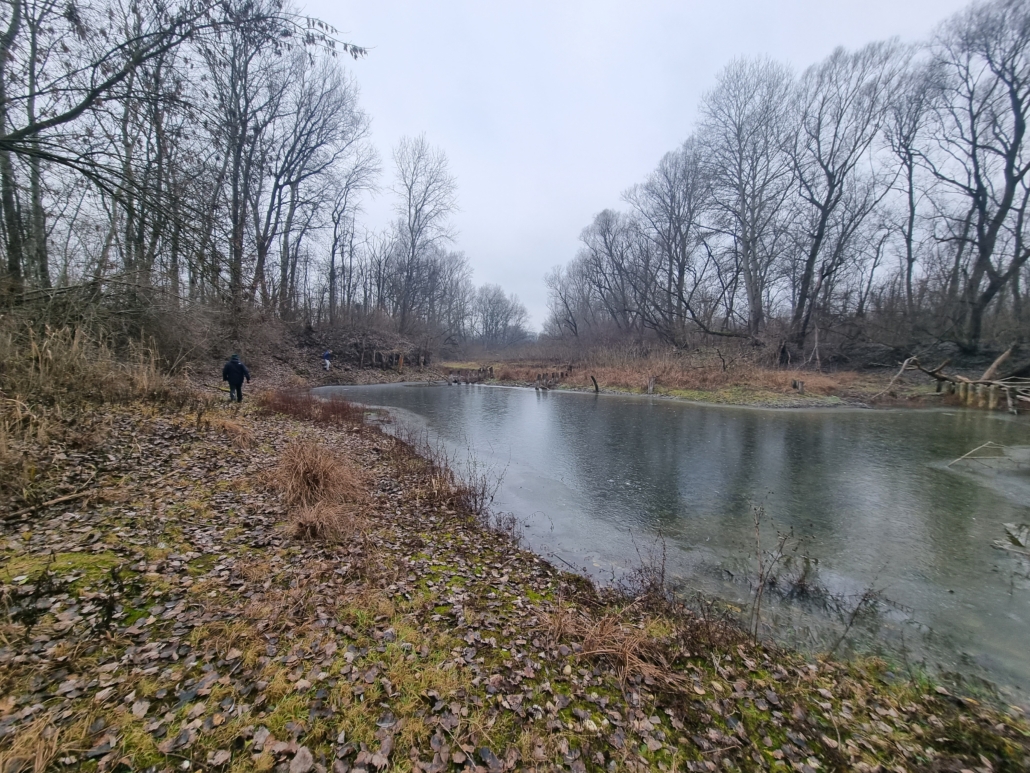
C.3 restoration site©B. Španiček
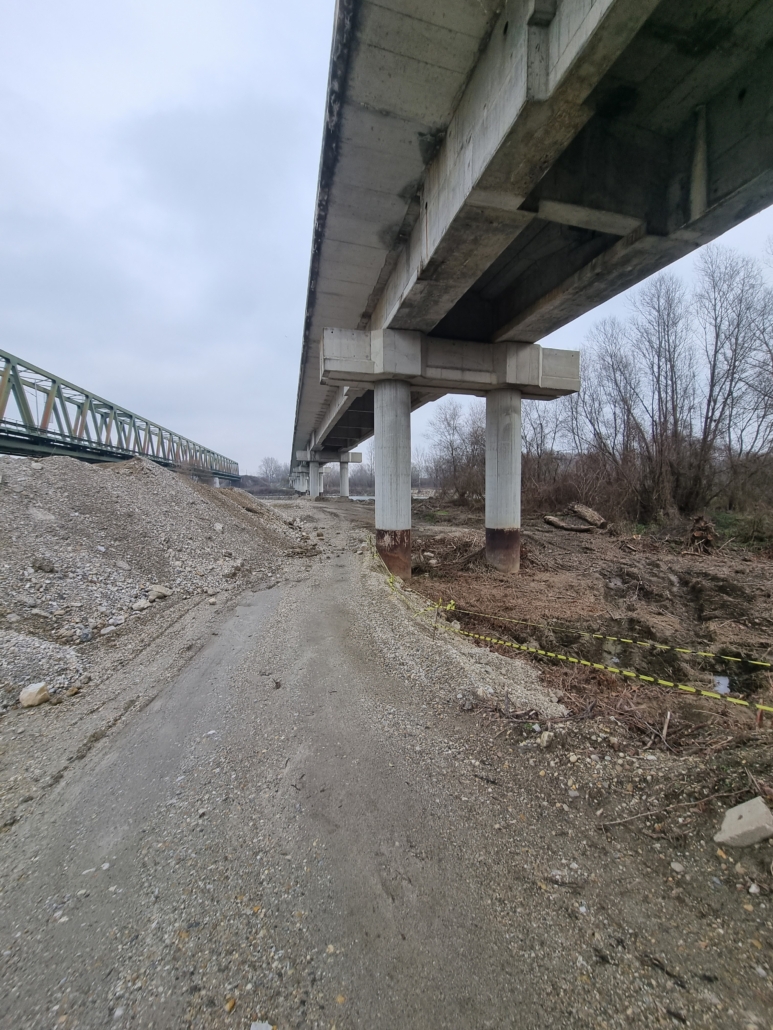
Constraction work at the Botovo bridge©B. Španiček
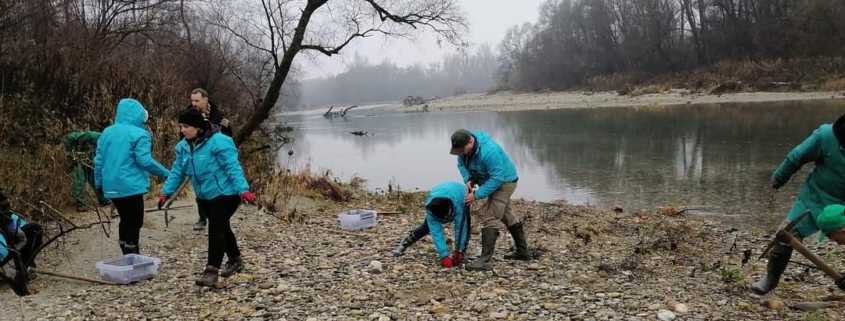 Javna ustanova za upravljanje zaštićenim dijelovima prirode Varaždinske županije
Javna ustanova za upravljanje zaštićenim dijelovima prirode Varaždinske županijeGerman tamarisk successfully reallocated on the natural habitats on Drava River
/in Nekategorizirano /by Petra Boic PetracFifteen river enthusiasts from, High school Arboretum Opeka, Hrvatske vode, State Institute for Environment and Nature Protection for and State Inspectorate led by Public Institution for Management of Protected Natural Areas in Varaždin County have joined their efforts on Friday the 9th of December 2022 in an action of reallocation of 30 plants from the gravel pit Turnišće to the gravel bar on Drava River downstream of the Ormož lake.
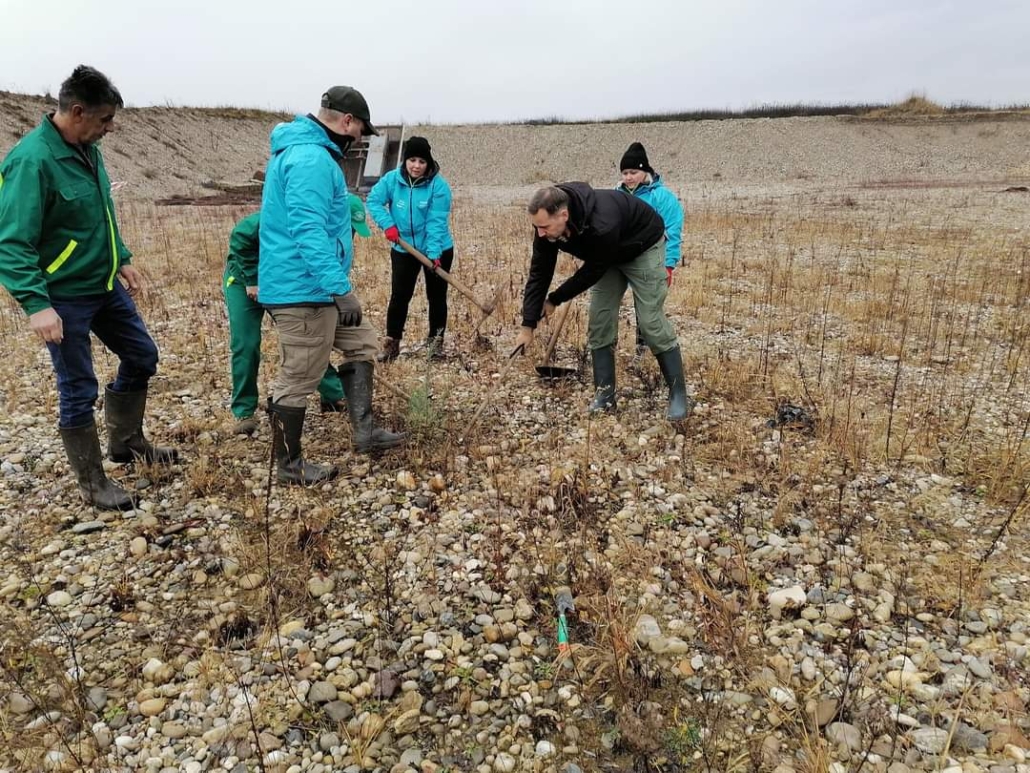
From the cuttings made of two largest plants, employees of the Zagreb Botanical garden and students of the High school Arboretum Opeka will try to produce young rooted plants that can, at later stages, be reallocated on the natural habitats on Drava.
German tamarisk (Myricaria germanica) is pioneer species which grows on gravel banks of rivers and banks of watercourses of the Alps and their foothills. It is a plant adapted to the unique ecological conditions on its habitat which is restricted to the newly created gravel and sand bars of braided rivers. Therefore, these species are considered as indicator species of healthy and natural rivers. German tamarisk has vanished from the natural habitats of the Drava River due to river channelization, construction of hydropower plants, as well as by gravel and sand extraction. Therefore, gravel and sand bars as pioneer habitat types have become very rare in Europe and are one of the most endangered ecosystems. German tamarisk is strictly protected species in Croatia which makes it highly important to ensure the remaining population is secured and well monitored.
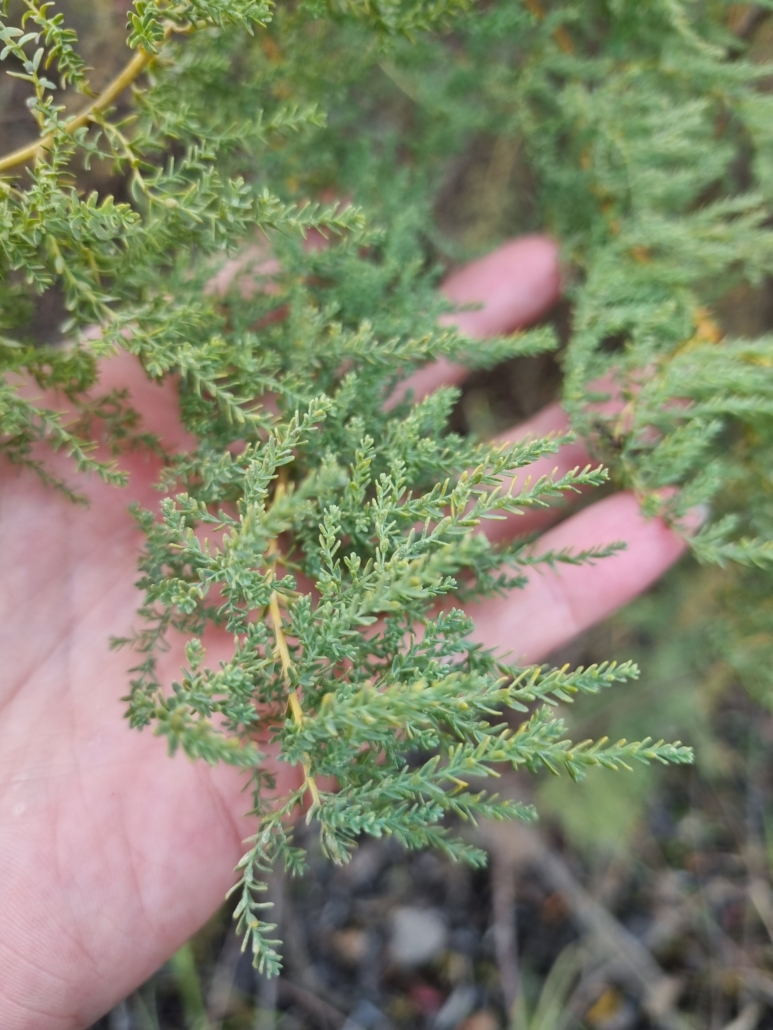
This is very valuable activity led by one of the DRAVA LIFE project partners, contributing to already implemented repopulation and reallocation activities of German tamarisk done in previous years.
We hope that the newly reallocated plants will thrive in the new, natural habitat and will spread on the habitats downstream in future years!
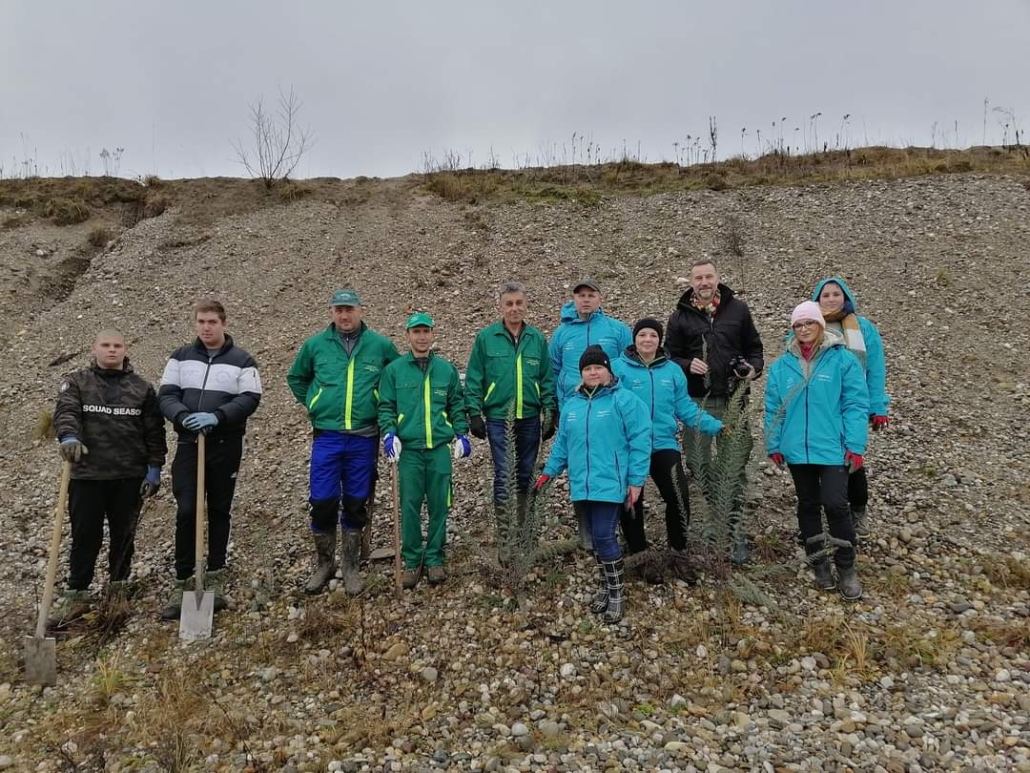

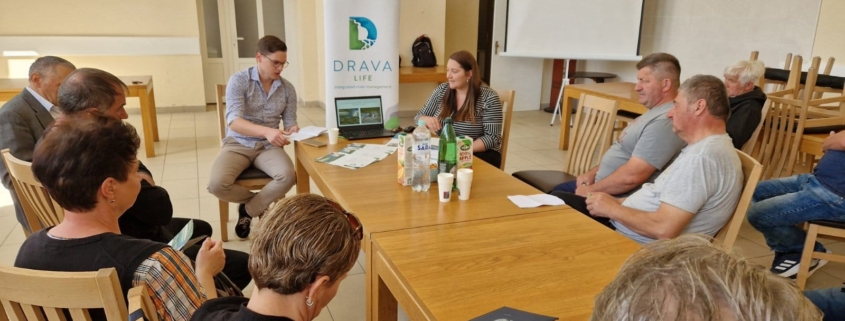
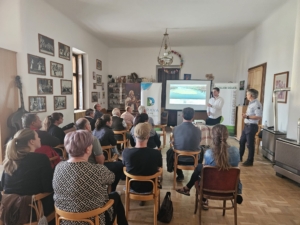
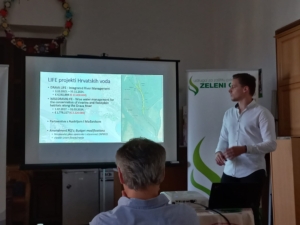
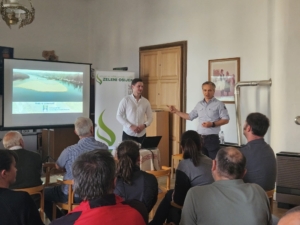
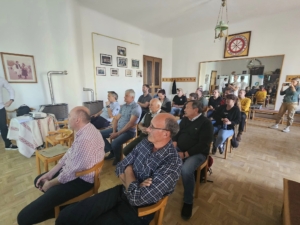
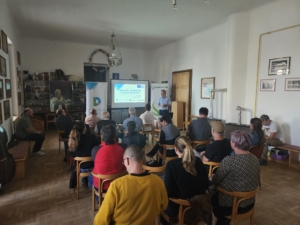
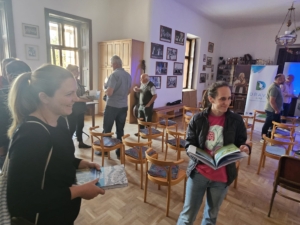
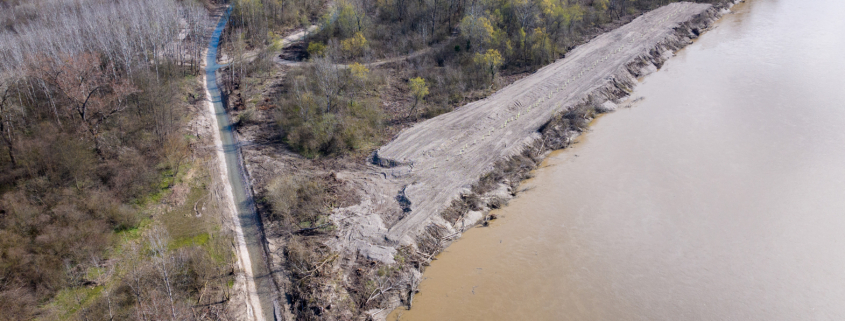
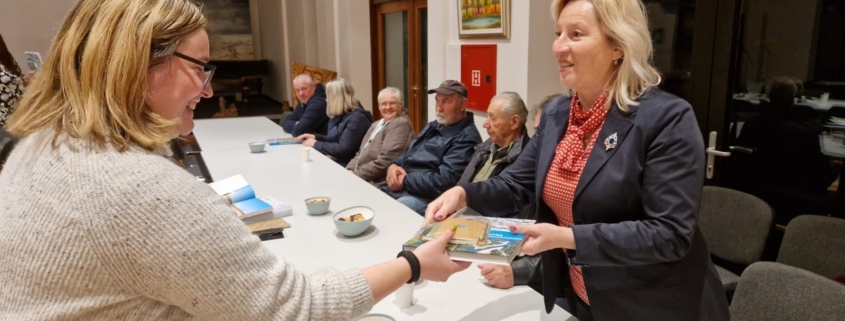
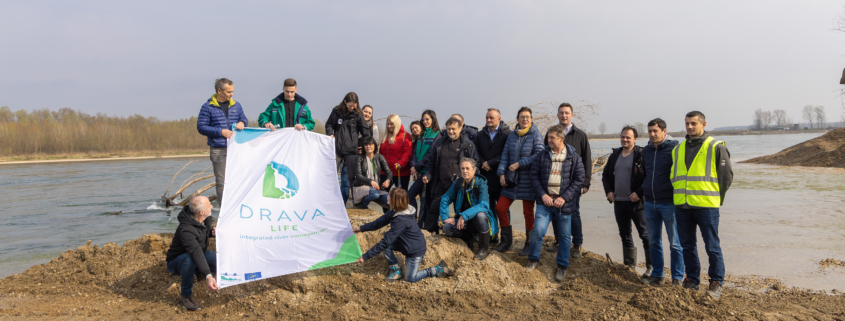
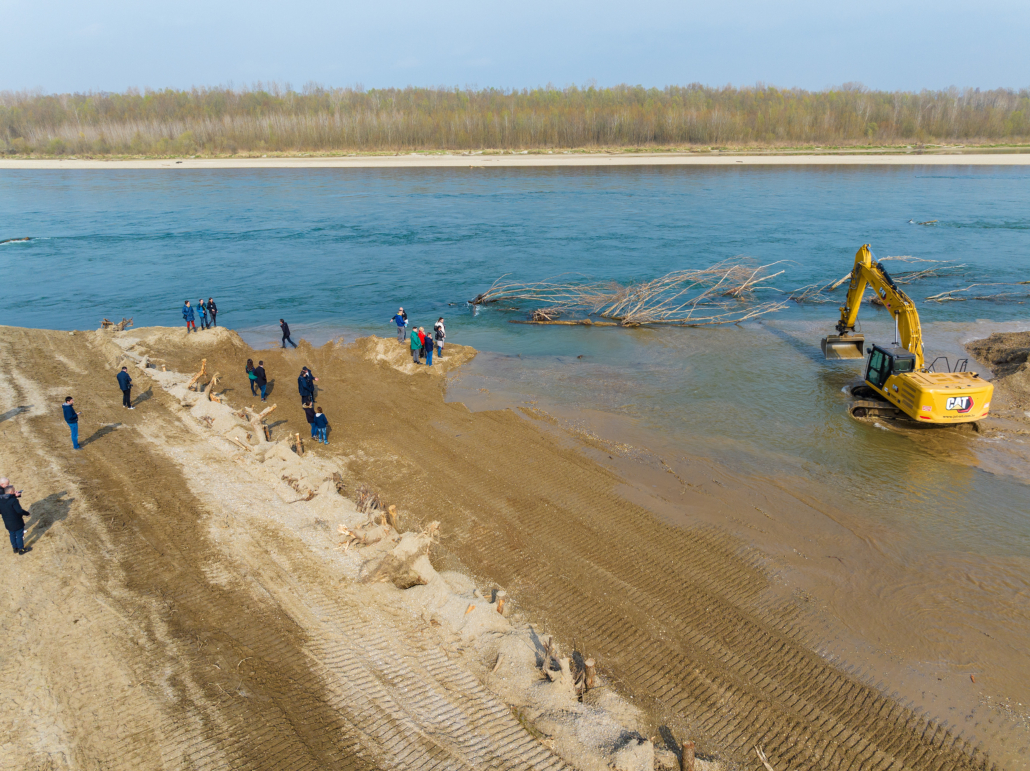
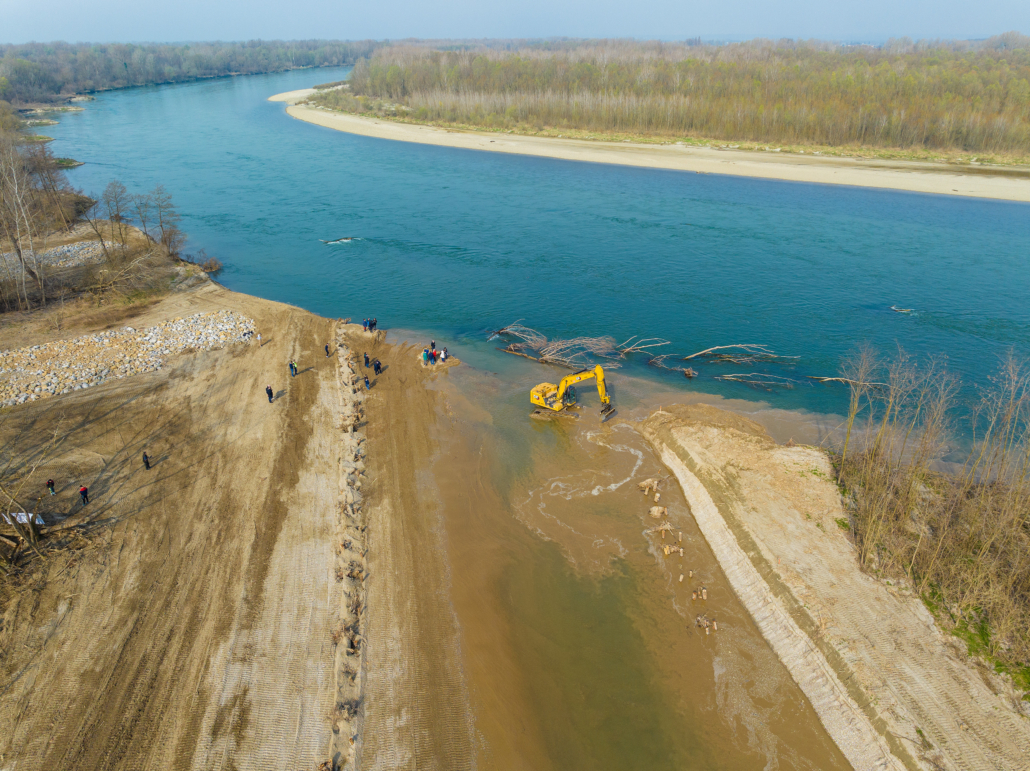
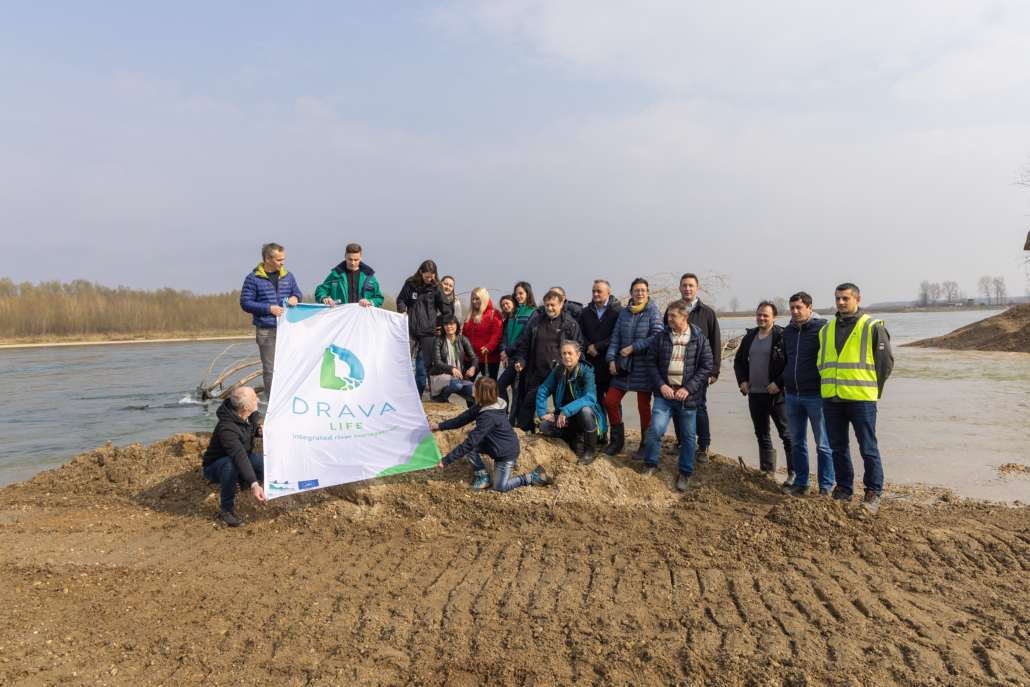
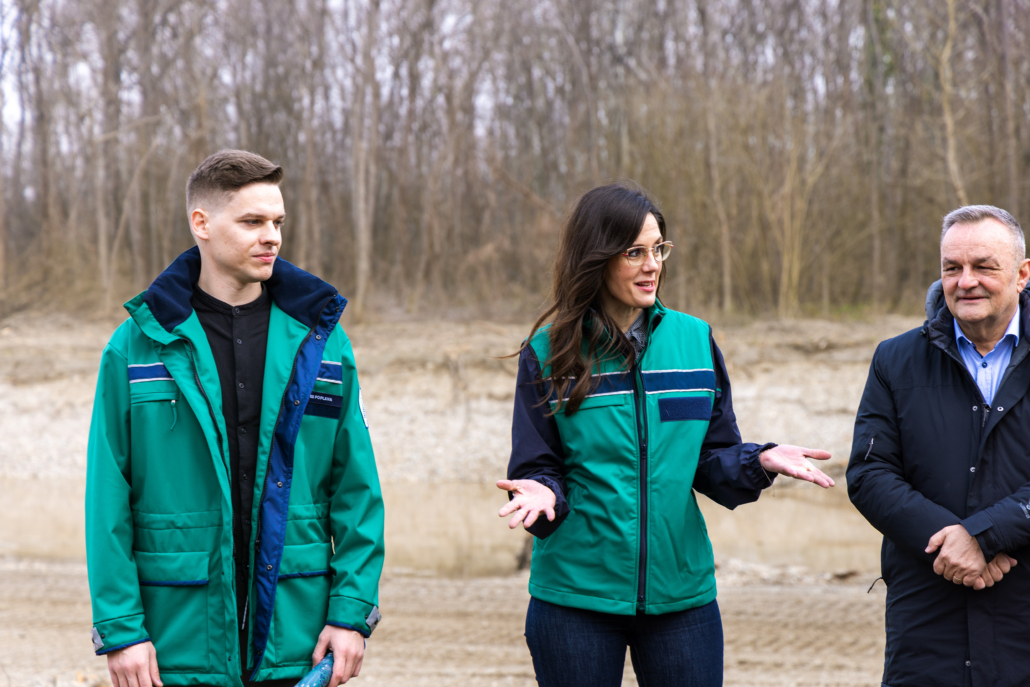
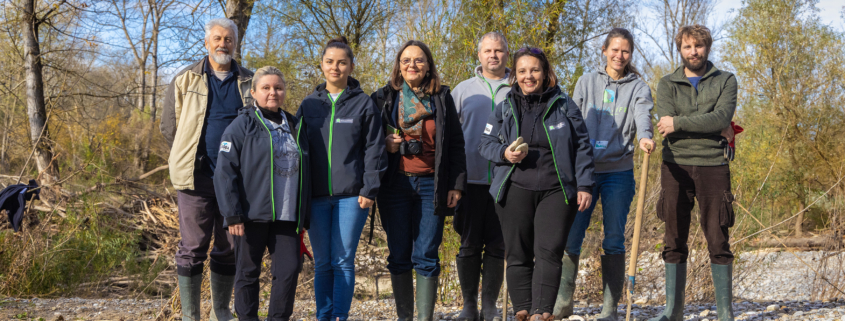 DRAVA LIFE
DRAVA LIFE